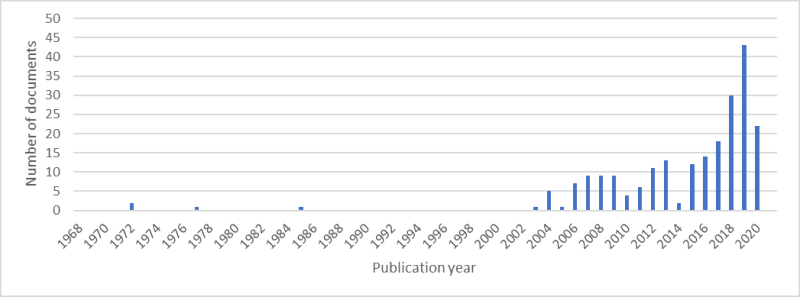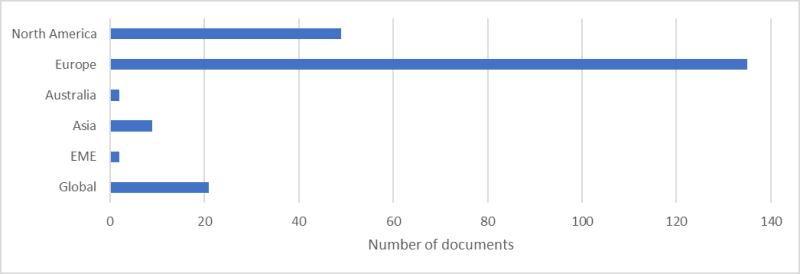Research Into Hydrogen Transportation by Pipeline Increasing
By Maddy McCarty, P&GJ Digital Editor
The efforts to research hydrogen transportation by pipeline are increasing and becoming more coordinated, a presentation at the 17th Annual Pipeline Opportunities Conference indicates.

Gary Hines, the vice president of operations for Pipeline Research Council International, discussed global considerations for hydrogen pipeline transportation at the March 30 conference hosted by Pipeline & Gas Journal in partnership with the Interstate Natural Gas Association of America (INGAA) and the SMU Maguire Energy Institute.
The study had a core team of 17 organizations, more than 50 subject matter experts, and additional outreach to 15 organizations and 30 experts. There were 353 documents identified for review globally.
The study also uncovered how complex it is to study global considerations for hydrogen pipeline transportation. Some of that complexity comes from the significant differences between hydrogen and methane, Hines said.
“For our value chain of moving, transporting natural gas as we do today, and continuing to increase the blend of hydrogen, it pretty much changes everything in our system,” he said. “This impacts everything. This isn’t one minor change.”
Plenty of work has been published regarding blending of hydrogen in pipeline systems, but there is less that exists for increasing the percentage of hydrogen in the blend and transporting exclusively hydrogen.
Hydrogen has a much smaller atom size than methane, Hines said.

“Hydrogen can leak through very small areas,” Hines said. “Components or material being used even in the research lab has to change because of the miniscule size of the hydrogen atom and how it actually moves through very small areas and leaks in spaces that we didn’t traditionally consider.”
There will be many more equipment and safety studies that do not focus specifically on construction of pipelines.
“There’s things … that impact even things such as the equipment that we wear or carry with us for hazardous environments, that’s much different than our experience in the past,” Hines said. “This is much broader than just a construction issue, just one single item that you may want to consider.”
One example is hot tapping impact, Hines said. Within the issue of hot tapping, there are components of safety applications, equipment, the buffer zone and more, he said, adding there is the modeling side and the safety side to examine. There are multiple research efforts happening within the hydrogen space for hot tapping alone, Hines said.
“Hopefully, that offers you some scale as to the amount of work that’s being performed and certainly the amount of work that must be performed as we move forward,” he said.
Something the PRCI SOTA study did and continues to do is identify the hydrogen research happening to ensure efforts are not duplicated. PRCI is also working to connect parties that are researching similar topics to encourage collaboration and match interested parties with remaining gaps and under-researched topics, Hines said.
While hydrogen research has been happening since the 1970s, it is hard to say if anyone could have predicted even a year ago the large amount of research being performed today, he said.
“There’s a fast, fast migration of the amount of work and engagement in this space for various areas,” he said. “The worldwide interest is large and growing.”
PRCI is a not-for-profit trade association with a mission to collaboratively deliver relevant and innovative applied research to continually improve the global energy pipeline systems, Hines said.
PRCI completed a state-of-the-art study within the hydrogen field late last year, he said. The study focused on finding the gaps that exist within the industry, mapping of worldwide projects and references, state-of-the-art analysis, gap analysis and recommendations for research and development topics.
The PRCI SOTA study is available for purchase by clicking here. The presentation and the entire Pipeline Opportunities Conference is available for free on demand by clicking here.
Related News
Related News

- Kinder Morgan Proposes 290-Mile Gas Pipeline Expansion Spanning Three States
- Enbridge Plans 86-Mile Pipeline Expansion, Bringing 850 Workers to Northern B.C.
- Intensity, Rainbow Energy to Build 344-Mile Gas Pipeline Across North Dakota
- Tallgrass to Build New Permian-to-Rockies Pipeline, Targets 2028 Startup with 2.4 Bcf Capacity
- U.S. Moves to Block Enterprise Products’ Exports to China Over Security Risk
- U.S. Pipeline Expansion to Add 99 Bcf/d, Mostly for LNG Export, Report Finds
- A Systematic Approach To Ensuring Pipeline Integrity
- 275-Mile Texas-to-Oklahoma Gas Pipeline Enters Open Season
- US Poised to Become Net Exporter of Crude Oil in 2023
- EIG’s MidOcean Energy Acquires 20% Stake in Peru LNG, Including 254-Mile Pipeline




Comments